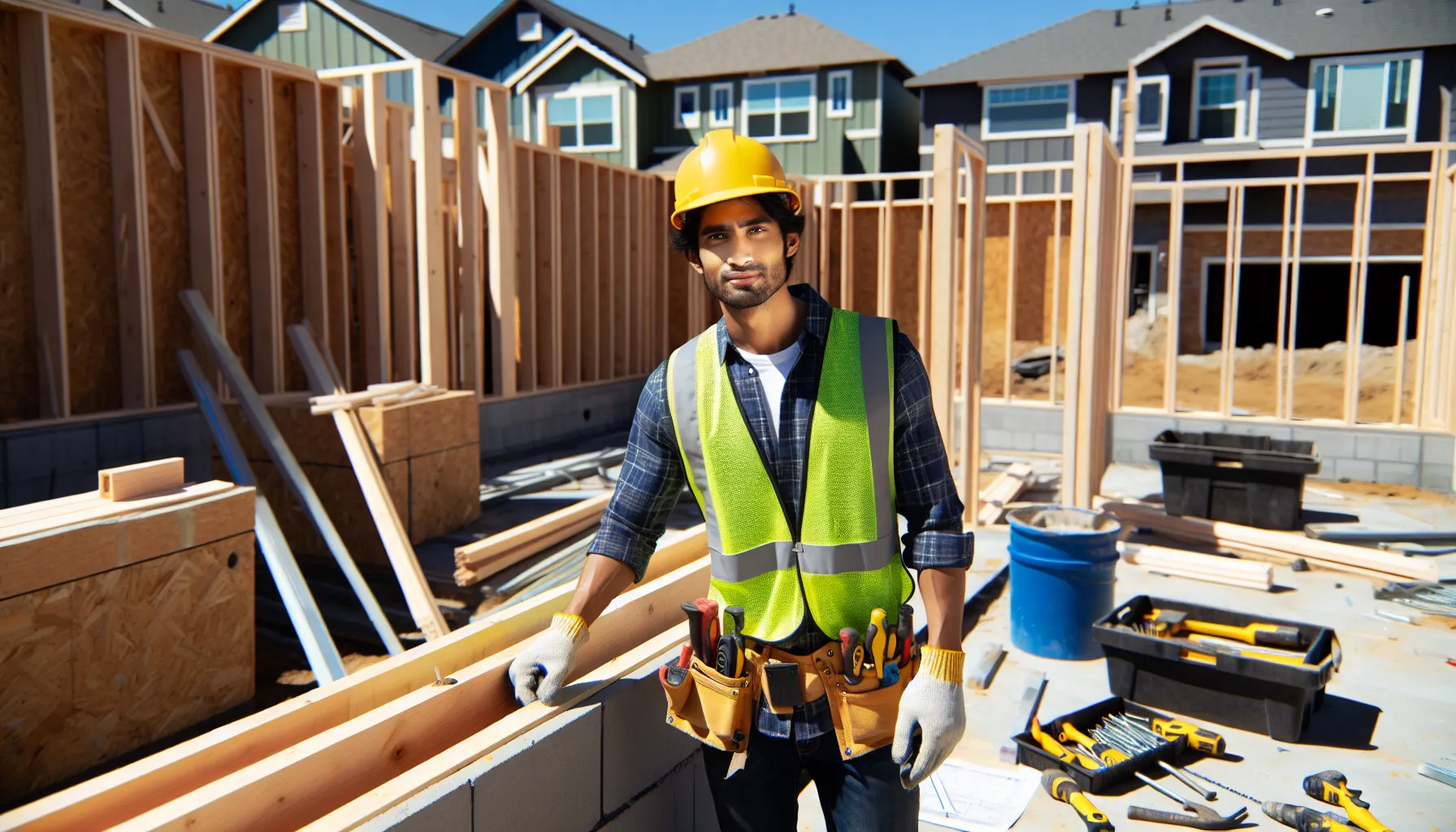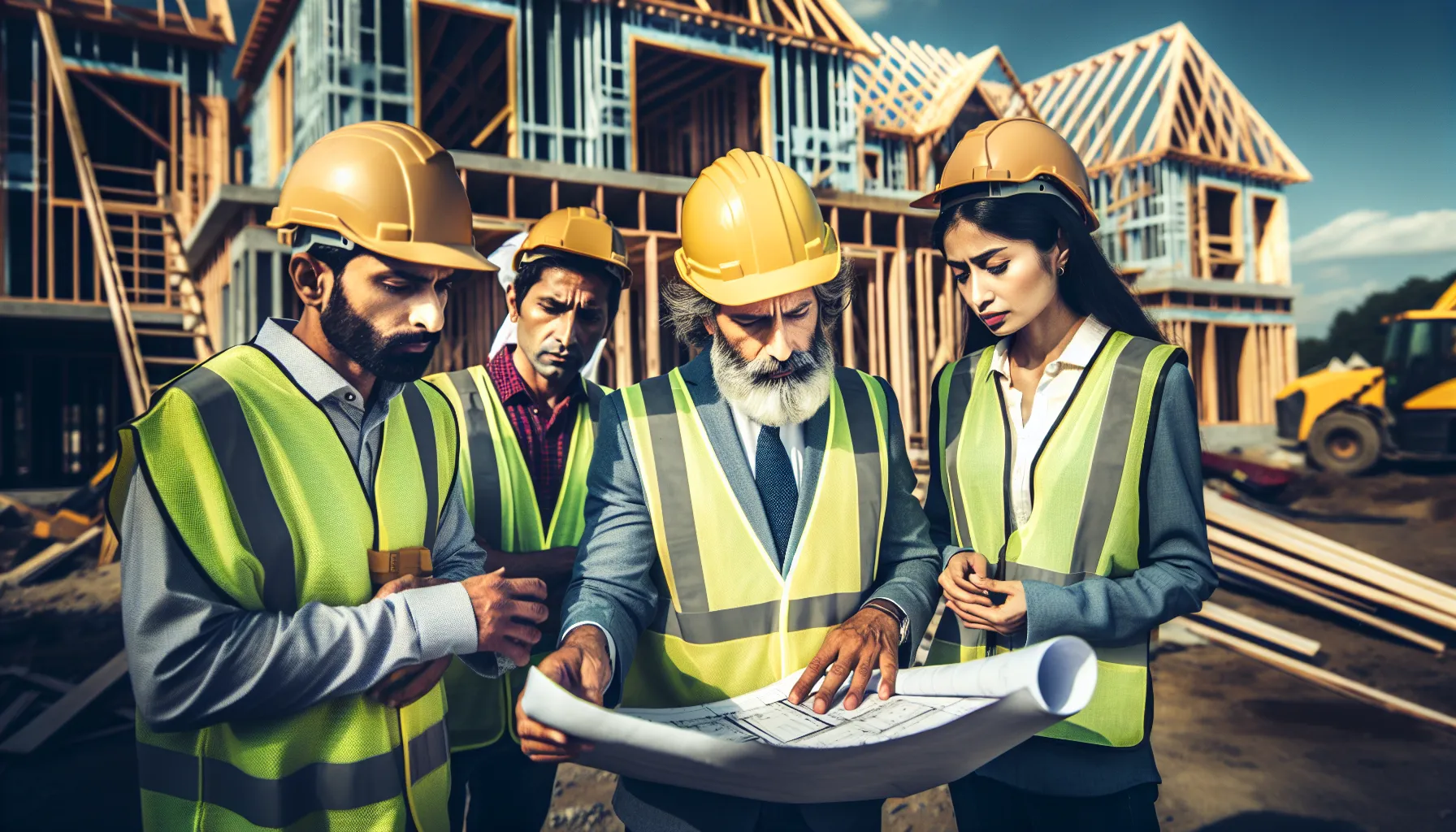Key Takeaways
- Step-by-Step Approach: Breaking down the house-building process into 35 manageable steps minimizes stress and errors, guiding you effectively from planning to completion.
- Location Matters: Selecting the right plot affects not only daily living but also resale value, making location one of the most critical choices in the building process.
- Budgeting Essentials: Establishing a comprehensive budget, covering land, materials, labor, and unexpected costs, is crucial for a successful build and financial sustainability.
- Professional Collaboration: Working with architects, electricians, and plumbers ensures quality results and compliance with local regulations, enhancing safety and functionality.
- Final Walkthroughs: Conducting thorough final inspections helps verify that all work meets expectations, allowing issues to be resolved before moving in.
- Organized Moving: Preparing for the move with proper organization and early packing can facilitate a smoother transition into your new home, making settling in much easier.
Building a house is an exciting journey, but it can also feel overwhelming. From choosing the perfect plot of land to putting the finishing touches on your dream home, every step matters. We’re here to break it down into 35 manageable steps that guide you from start to finish.
Overview of The 35 Steps to Building a House
Building a house involves a multitude of steps, and knowing each one simplifies the process. Here, we outline the essential stages in the journey from initial planning to moving into your new home.
Importance of a Step-by-Step Guide
A step-by-step guide ensures clarity throughout the building process. By breaking down tasks into manageable parts, we reduce stress and minimize the chance of errors. Each step serves as a roadmap, offering structure in what can be an overwhelming journey. For instance, understanding when to secure financing versus when to begin construction can significantly impact timelines and costs. This structured approach enables us to make informed decisions, ultimately leading to a successful outcome.
Key Considerations Before You Start
Before embarking on this journey, several key considerations demand our attention. First, choosing the right location is vital; proximity to schools, amenities, and work can affect our day-to-day lives. Additionally, assessing our budget comprehensively accounts for not just construction costs but also permits, utilities, and unexpected expenses. We must also consider the local housing market to ensure our investment aligns with future value. Clarifying our priorities, such as energy efficiency or size, helps us remain focused and aligned with our vision for the home. Each of these factors significantly influences our building journey and sets the foundation for success.
Preparing for Construction

Before we break ground on our new home, meticulous preparation sets the stage for a successful build. This phase involves crucial steps that ensure we’re aligned with our goals and resources.
Setting a Budget
Establishing a clear budget dictates our construction choices and affects every aspect of the project. We begin by determining the overall cost of building, factoring in land acquisition, materials, labor, permits, and contingencies. Accurate estimates help avoid financial strain later. For instance, using online calculators can provide rough figures, but consulting with a financial advisor ensures detailed planning. As we refine our budget, it’s essential to prioritize key elements over non-essential features, as this balances quality and cost. Regularly revisiting and updating our budget will help maintain our financial health throughout the construction process.
Choosing the Right Location
Selecting the perfect location is vital and influences countless decisions, from design to amenities. We evaluate factors like proximity to schools, work, shopping, and recreational areas. Access to public transportation can also be a significant consideration for many. Additionally, understanding zoning laws and potential future developments in the area is crucial; these can impact property value and livability. We should research crime rates and community demographics to ensure that our chosen location aligns with our lifestyle needs. Ultimately, a well-considered location not only enhances our living experience but also serves as an investment in our future.
Designing Your House

Designing a house forms the backbone of the entire building process. Effective planning requires collaboration, creativity, and attention to detail.
Working with an Architect
Collaborating with an architect provides essential expertise during the design phase. Architects translate our vision into functional designs, ensuring the layout meets our needs. They assess spatial relationships, light flow, and structural integrity while adhering to local codes. When selecting an architect, consider their experience, portfolio, and communication style. We benefit from discussing our requirements openly, enabling them to create designs that reflect our lifestyle and preferences. Engaging with an architect early in the process helps us avoid costly adjustments later on.
Finalizing Plans and Blueprints
Finalizing plans and blueprints signals a crucial step before construction begins. This stage involves refining designs, selecting materials, and aligning with budget constraints. We review details such as floor plans, elevation drawings, and electrical layouts to ensure clarity. After thorough revisions, obtaining necessary permits becomes imperative, as it guarantees compliance with local regulations. It’s vital to double-check all specifications, as inaccuracies can lead to construction delays or additional costs. Secure final approvals before moving forward; this guarantees a streamlined building process, paving the way toward our dream home.
Obtaining Permits and Approvals

The process of obtaining permits and approvals stands as a vital step in building a house. Securing the right permits ensures compliance with local regulations and promotes the safety and sustainability of the project.
Understanding Local Regulations
Understanding local regulations defines the foundational knowledge necessary for a successful building project. We must research zoning laws, building codes, and safety standards specific to our area. Each locality has its own requirements, which can impact aspects like property setbacks, height restrictions, and materials allowed. For example, a residential construction project in a historic district might require additional review processes. Engaging with local government offices or online databases can provide clarity on these regulations, setting the groundwork for successful permit acquisition.
Navigating the Permit Process
Navigating the permit process involves several key stages that can dictate the project’s timeline and success. Typically, we start by gathering the necessary documentation, such as architectural plans and site surveys, tailored to our local authority’s specifications. Next, we submit the application, often requiring fees that vary by location and type of permit. Regular follow-ups with the permitting office can expedite any requests for additional information or revisions. We also account for potential delays, as permit processing times can range from a few days to several months, depending on the complexity of the project and local workload. Staying proactive throughout this phase helps ensure that we’re prepared to move forward promptly once approvals are granted.
Breaking Ground

Starting construction involves key steps that shape the entire building process. Groundbreaking marks a significant milestone when we prepare the site for work. This phase lays the groundwork for a successful project.
Site Preparation
Site preparation involves clearing the designated area for construction. We need to remove debris, trees, or other obstacles that may interfere with building operations. Proper grading plays a vital role, as leveling the ground ensures adequate drainage and prevents water accumulation in basements or foundations. Soil stability is also crucial; soil tests can identify the need for additional reinforcement to support the home structure. During this stage, we may also install temporary utilities, such as electricity and water, to facilitate construction activities. Engaging with local contractors familiar with the area can smooth the preparation process.
Laying the Foundation
Laying the foundation is a critical step that significantly impacts the structure’s longevity. We can choose from various foundation types, including slab, crawl space, or full basement foundations, depending on local soil conditions and design preferences. Once determined, excavation begins, followed by pouring concrete to form the foundation walls and footings. We need to ensure proper waterproofing measures to protect against moisture intrusion. Reinforcement bars provide additional strength and help support the structure. Building inspectors often verify that the foundation adheres to local codes, solidifying our groundwork for the construction ahead. Proper foundation installation sets the stage for a durable and safe home.
Building the Structure

Building the structure of a house involves significant steps that lay the foundation for the living space. These steps ensure the home is both functional and durable.
Framing the Walls
Framing the walls represents the skeletal structure of our home. This stage involves erecting wooden or metal frames that define the layout and support the building. We typically use 2×4 or 2×6 lumber for wall frames, allowing for insulation and electrical installations. The framing also includes windows and door openings, ensuring proper placement. It’s vital to adhere to local building codes during this process, as these regulations dictate wall dimensions, spacing, and materials. Using bracing techniques can enhance structural stability and resist wind. Thorough inspections during this phase verify the framing’s integrity, ensuring the walls can withstand various conditions.
Installing the Roof
Installing the roof marks a crucial step in safeguarding our house from the elements. The process begins with selecting roofing materials, such as asphalt shingles, metal panels, or tiles, based on durability and aesthetic preferences. We then build a sturdy roof framework, consisting of rafters or trusses, that supports the roofing material. Proper installation techniques are crucial to prevent leaks and ensure insulation. During this phase, we ensure that ventilation systems function effectively to reduce moisture buildup, which can lead to mold. Additionally, adhering to local building codes guarantees that the roof withstands weather-related challenges, protecting our investment for years to come.
Electrical and Plumbing Work
The electrical and plumbing work forms a vital stage in home construction, ensuring safety and functionality. These systems must be effectively integrated into the overall design for optimal performance.
Hiring Professionals
We recommend hiring licensed electricians and plumbers to guarantee quality workmanship. Professionals possess the necessary skills and knowledge to navigate local codes and regulations. For example, they can ensure electrical systems provide adequate power while minimizing risks of overload and fire. Additionally, they can determine the best placement for plumbing lines, avoiding costly disruptions later in the project. By entrusting these tasks to experts, we enhance the home’s safety and value and streamline the overall construction timeline.
Ensuring Safety and Compliance
Safety and compliance with local building codes maintain the integrity of the home. We must prioritize thorough inspections during the installation of electrical and plumbing systems. For instance, local building inspectors review plans and installations, ensuring they meet regulatory standards. This diligence can prevent future issues like leaks, electrical failures, or safety hazards. By adhering to safety standards, we protect not only our investments but also the well-being of everyone who lives in the home. Compliance guarantees that the systems perform efficiently while safeguarding our property against costly repairs or liabilities.
Interior and Exterior Finishing
Interior and exterior finishing involves crucial steps that bring a house to life. This phase focuses on aesthetics, functionality, and durability, ensuring that every detail aligns with the homeowner’s vision.
Choosing Materials and Colors
Choosing materials and colors defines the aesthetic appeal and functionality of the home. Select durable materials, such as hardwood for flooring and quartz for countertops. Each material affects maintenance and longevity, making careful selection essential. Common choices for exterior finishes include stucco, brick, or vinyl siding, where local climate plays a significant role in the decision. Color schemes should suit the environment while reflecting personal style—light colors can make spaces feel larger, while darker tones offer warmth.
When considering finishes, we often weigh both visual appeal and cost-effectiveness. For example, premium paint options may increase visual impact but also require more substantial investment. Our goal is to balance budget constraints with high-quality finishes that enhance the overall livability and resale value of the property.
Landscaping Your Property
Landscaping shapes first impressions and enhances property value. Design elements should harmonize with the home’s architecture and surrounding environment. Choose native plants for their sustainability and low-maintenance benefits. Incorporating features like pathways, patios, or garden beds can provide functional outdoor spaces that invite relaxation or social gatherings.
When planning landscaping, consider the local climate and soil conditions, which influence plant health and growth. Using mulch can improve garden aesthetics while reducing weeds. Additionally, well-placed trees provide shade and can help lower energy costs significantly.
Investing in professional landscape design often leads to a more cohesive and appealing outdoor space. As we create outdoor environments that complement our homes, it’s essential to think about how these choices impact our daily lives and the overall enjoyment of the property.
In real estate, thoughtful decisions during the finishing phase significantly enhance both comfort and marketability.
Final Inspections and Moving In
Completing final inspections and preparing for the move marks the culmination of our home-building journey. This phase ensures that every detail meets standards and expectations while preparing us for life in our new home.
Conducting Final Walkthroughs
Final walkthroughs are essential to verify that all work aligns with our expectations and contractual agreements. During this inspection, we’ll check for completeness, identify any discrepancies, and assess the quality of finishes. Common elements to review include windows, doors, fixtures, and appliances. Bringing a checklist can help us track details and ensure nothing is overlooked. If we find issues, it’s crucial to address them with our builder immediately, as they should resolve any concerns prior to moving in. This proactive step minimizes the risk of future headaches as we settle into our new environment.
Preparing for the Big Move
As we prepare for the big move, organization is key to a smooth transition into our new home. Starting early with packing helps reduce last-minute chaos. We’ll label boxes according to rooms, ensuring efficient unpacking later. Additionally, scheduling utilities such as electricity, water, and internet in advance ensures we settle in comfortably. It’s also wise to conduct a thorough cleaning of the new space before moving furniture and personal belongings inside. Transition kits with essentials—such as toiletries, bedding, and kitchen items—will ease our immediate needs on moving day. By approaching the move methodically, we lay the groundwork for a seamless entry into our new home, allowing us to focus on creating lasting memories.
Conclusion
Building a house is a journey filled with excitement and challenges. By following the 35 steps outlined in our guide, we can navigate this process with clarity and confidence. Each phase plays a vital role in shaping our dream home and ensuring a successful outcome.
From careful planning and budgeting to selecting the right materials and collaborating with professionals, every decision we make impacts the final result. As we approach our move-in day, let’s remember the importance of thorough inspections and organization to create a smooth transition.
With dedication and attention to detail, we can turn our vision into reality and enjoy the comfort of our new home for years to come.
Frequently Asked Questions
What are the initial steps to building a house?
The initial steps include selecting the right plot of land, assessing your budget comprehensively, and understanding the local housing market. These factors lay the groundwork for a successful building journey.
Why is budgeting important in home construction?
Budgeting is crucial as it dictates construction choices and impacts every aspect of your project. A clear budget helps prevent financial strain and ensures that all costs, such as land, materials, and permits, are covered.
How do I choose the right architect for my home?
Select an architect based on their experience, communication style, and portfolio. Open discussions about your vision and requirements are essential to ensure they can create functional designs that reflect your lifestyle.
What permits are needed when building a house?
You will typically need various permits related to zoning and building codes. Understanding local regulations and submitting the necessary documentation is vital to ensure compliance and avoid delays.
What is the significance of site preparation?
Site preparation involves clearing the land and properly grading for drainage, which is vital for foundation stability. This step ensures the site is ready for construction and helps prevent future issues.
Why is the foundation important in home building?
The foundation supports the entire structure, affecting its longevity and safety. Proper techniques, such as waterproofing and reinforcement, must be used to ensure a strong and durable foundation.
How should I approach electrical and plumbing work?
Hire licensed professionals for electrical and plumbing installations to ensure safety and compliance with local codes. Thorough inspections should be conducted to maintain the integrity of these essential systems.
What should I consider during the finishing phase of my home?
Focus on materials, colors, and landscaping that align with your vision while ensuring durability and ease of maintenance. Thoughtful choices during this phase significantly enhance the comfort and marketability of your home.
What are the final steps before moving into my new home?
Conduct final walkthroughs to verify quality and completeness of finishes. Prepare for your move by packing early, labeling boxes, scheduling utilities, and cleaning the new space to ensure a smooth transition.






